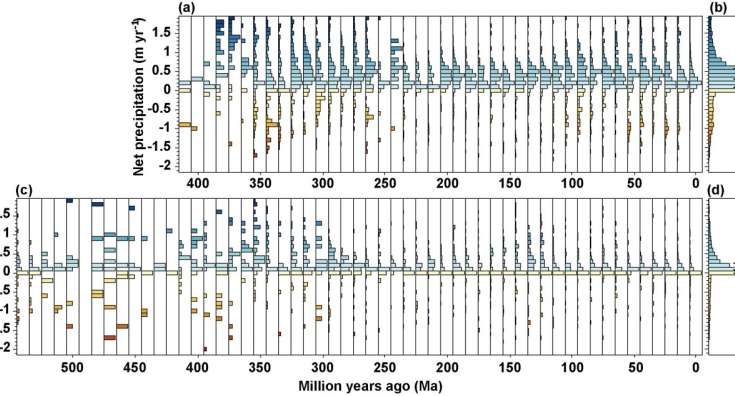In a Chinese study published in National Science Review and led by Prof. Yongyun Hu (Department of Atmospheric and Oceanic Sciences, School of Physics, Peking University, China), the authors combined geological records of geological records with climate simulations, and established quantitative relationships of coals and evaporites with temperature and precipitation during the Phanerozoic.
Coals were originally formed from plants that require plenty of water or precipitation. Thus, regions with coal were wet and warm. In contrast, evaporites were formed in arid and hot regions where evaporation is strong. Therefore, coals and evaporites are commonly used as qualitative indicators of wet and dry climate conditions, respectively, in deep-time climate studies. However, quantitative relationships of coals and evaporites with temperature and precipitation have never been established.
They showed that coals occurred predominantly in the equatorial region in the late Paleozoic. This is because Pteridophytes were the dominant plants in the Paleozoic, which had rather weak water transport capacity and preferred to grow in the tropics where climate was warm and humid. Thus, coals were mainly formed in the tropics in the late Paleozoic, and the associated median annual mean temperature and precipitation are 25°C and 1300 mm, respectively.
In the Mesozoic, gymnosperms became dominant. Gymnosperms’ internal water transport systems-secondary xylem had been developed, so that they were more adaptable to drier and cooler conditions than pteridophytes. As continents gradually moved into the Northern Hemisphere, plants spread to the rainy temperate zone at higher latitudes of the Northern Hemisphere. Thus, coals started to form around 50°N in the Mesozoic, with the median annual mean temperature and precipitation of 10°C and 900 mm, respectively.

At the same time, white rot fungi, the lignin eating microbes, caused the rapid decay of lignin. As a result, there were rare coals in the tropics in the Mesozoic.
Climate has been systematically cooling in the Cenozoic, and precipitation also declined. In this period, angiosperms became prevailing, which are adaptable to the cooler and drier climate in the Cenozoic. Therefore, the localities of coals and associated with temperature and precipitation are similar to that in the Mesozoic.
Evaporites always formed in the subtropical dry zones of the Northern and Southern Hemispheres in the Phanerozoic. Prior to the early Carboniferous, nearly all evaporites formed in the southern subtropics because little landmass located in the Northern Hemisphere. The occurrence of evaporites shifted to the northern subtropics since the late Paleozoic because of the northward motion of the supercontinent Pangea. The associated annual mean median temperature and precipitation are 27°C and 800 mm, respectively.
The most remarkable results of the study is that net precipitation (Precipitation-Evaporation) associated with coals and evaporites remained nearly constant across time, despite radical changes in global climate during hothouse and icehouse intervals in the Phanerozoic. The median value of net precipitation for coal records was 300 mm yr-1 and for evaporite records was 100 mm yr-1. This indicates that the physical and chemical processes responsible for coal and evaporite formations are time-invariant.
The establishment of these quantitative relationships can also be used for “predict” the localities of coals and evaporites in the Phanerozoic. More than 80% of coal and evaporite records are successfully predicted. The results also have important implications for quantifying climate conditions for other lithologic indicators of climate and for predicting exogenetic ore deposits.
#ChineseStudy; #Coal; #Quantifyingclimat conditions; #Evaporites; #GlobalClimate





